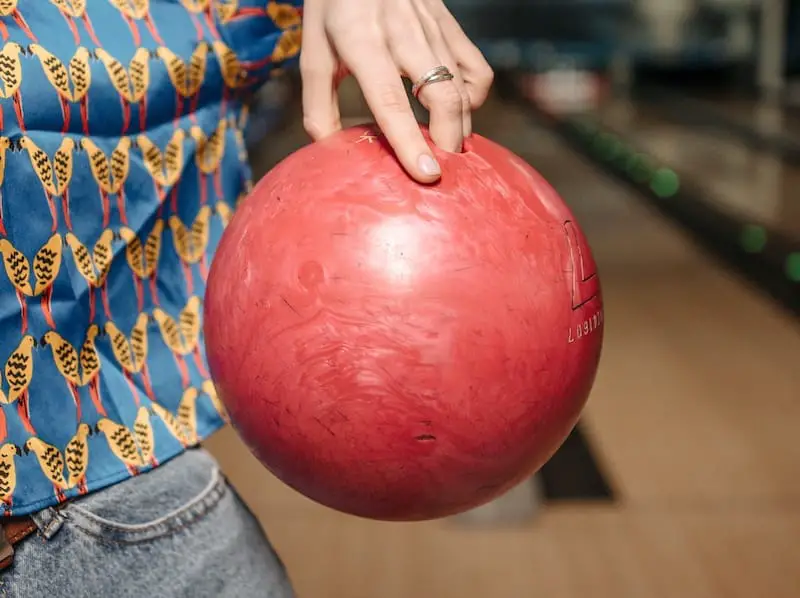The History of Duckpin Bowling
Duckpin bowling is a unique and challenging sport that has been played for over 100 years. It originated in Baltimore, Maryland in the early 1900s and quickly gained popularity throughout the eastern United States. The game was developed as a variation of traditional ten-pin bowling with smaller pins and balls, making it more difficult to achieve high scores.
The name “duckpin” is said to have come from the shape of the pins themselves, which are shorter and rounder than traditional bowling pins, resembling a duck’s body. Despite its origins as a regional pastime, duckpin bowling has grown into a beloved sport enjoyed by people around the world.
Read more about what Duckpin Bowling is.
Duckpin Bowling Tips for Beginners
Proper Stance and Grip
A good stance is crucial in any sport, and duckpin bowling is no exception. Your feet should be shoulder-width apart, with your non-dominant foot slightly ahead of the other.
This will provide a stable base from which to throw the ball. When it comes to grip, it is important to find what works best for you.
There are two main types of grips in bowling. The conventional grip sees the digits inserted into the holes up to the second knuckle, and the thumb inserted completely. Alternatively, the fingertip grip involves only the finger tips being placed into the holes.
How to Aim and Release the Ball
Aiming in duckpin bowling is different than in traditional ten-pin bowling since there are no arrows on the lane. Instead, you need to focus on aligning yourself with specific points on the lane. Look for marks or scratches that can guide your aim.
- Aim accurately at your target.
- When ready, gently release your ball.
- Bend your body forward at the waist as much as you’re comfortable with.
- Lastly, keep balanced with equal weight on both feet.
Importance of Follow-Through
Follow-through is critical in any sport that requires a throwing motion; duckpin bowling is no exception. When releasing your ball, follow through by extending your arm forward until it reaches its full length and pointing at your target before bringing it down slowly by bending at elbow level towards opposite hip area. Remember that following through will help you maintain control over your shot and ensure accuracy when aiming at pins down-lane from where you release them – so don’t neglect this important aspect of playing duckpin!
Advanced Duckpin Bowling Strategy
Understanding Lane Conditions
One of the essential aspects of advanced duckpin bowling strategy is understanding lane conditions. Every bowling lane is unique, and the condition of the lane can vary from day to day.
The amount of oil on the lanes directly affects how your ball will react when you release it. Therefore, it is essential to pay close attention to the oil patterns on the lanes before you begin your game.
Adjusting Your Approach Based On Oil Patterns
After familiarising yourself with the oil patterns on the bowling lanes, establishing a suitable approach is crucial. For instance, if one area features a more generous application of oil, a slight alteration to your starting position or delivery angle could be beneficial. This manoeuvre will aid in controlling the movement of your ball, increasing your chances of hitting your mark. See the example below:
Example: ‘On a heavy oiled lane, you may want to start further right (if you’re right-handed) to ensure the ball doesn’t slip off course too early.’
How to Master Different Ball Speeds and Angles
In addition to adjusting your approach based on lane conditions and oil patterns, using different ball speeds and angles can also be a significant advantage in advanced duckpin bowling strategy. By varying your speed and angle of delivery, you can create different types of spin on the ball and hit different pins with precision.
It’s crucial to understand and adapt to changing lane conditions. This involves:
- Manipulating Ball Speed: Ball speed significantly affects your game. For instance, a faster ball speed tends to reduce spin, while a slower speed can increase spin, leading to enhanced pin action.
- Practicing Consistently: Like any sport, perfecting duckpin bowling strategy demands dedication, time, and regular practice.
- Adapting to Changing Conditions: Understanding how to navigate variable lane conditions and adjusting your strategy accordingly is crucial. This adaptability can provide any player with a competitive edge.
Mastering these key elements can elevate your game and provide a significant advantage in the competitive world of duckpin bowling.
How to Get a Strike in Duckpin Bowling
Targeting the head pin
In duckpin bowling, consistent scoring often relies on mastering how to hit the head pin, which is the front pin in each set of three. Knocking over the head pin can potentially cause a domino effect among the other pins, giving rise to a strike. That’s the magic of the ‘chain reaction’. For example, hitting the head pin at a slight angle can make the pins bounce off one another, increasing the chances of knocking down more pins.
To aim for the head pin, bowlers should position themselves at the center of the approach and use their dominant eye to focus on a specific spot on the lane, several feet ahead of their starting point. The goal is to roll the ball directly towards that target, so it hits just slightly off-center and sends pins flying.
Utilizing spin for better pin action
Another technique that can help bowlers get strikes in duckpin bowling is using spin. Adding side-spin or backspin to your delivery can cause your ball to curve more or less as it travels down the lane, making it easier to hit specific clusters of pins. In general, side-spin (creating sidespin involves rolling your fingers across one edge of the ball) will cause your ball trajectory to curve towards either your left or right – depending on which hand you use – while backspin (which involves rolling your fingers overtop of and behind the ball) will encourage lofting bounce once entering into contact with other pins.
Consistency in delivery
Consistency is key when trying to get strikes in duckpin bowling. Bowlers need to maintain consistent form throughout each game so they can repeat their successes from frame-to-frame.
This means maintaining a stable stance with straight arms throughout their approach leading up till throwing release. Additionally focusing at one spot consistently at each release regardless if they throw a strike or don’t hit any pins at all helps them learn how much speed and angle they need on every shot, so they can adjust their technique as needed to hit the head pin with every shot.
Explanation of Duckpin Bowling
Duckpin bowling is similar to traditional ten-pin bowling in many ways, but there are some key differences that make it more challenging. The game is played on a lane that is 60 feet long and 5 feet wide, with ten duckpins arranged in a triangular shape at the end of the lane.
Each player gets three rolls per frame instead of two like in ten-pin bowling. And because the balls used in duckpin bowling are smaller and lighter than those used in traditional ten-pin bowling, it requires different techniques to achieve success.
The goal is still to knock down all ten pins per frame or score as many points as possible if not all pins fall down. The person with the highest score at the end of ten frames wins.
Differences between Duckpin and Traditional Ten-Pin Bowling
While duckpin bowling may look similar to traditional ten-pin bowling at first glance, there are several key differences between the two games. For starters, the balls used in duckpin bowling are much smaller than those used in ten-pin bowling – approximately 4 ¾ inches in diameter compared to ten-pin balls which are about 8 inches in diameter.
Additionally, each player is allowed three rolls per frame in duckpin bowling instead of two rolls per frame as seen in ten-pin bowling. Another notable difference is the size and shape of the pins themselves.
Duckpins are shorter and wider than traditional ten-pin bowling pins and don’t feature finger holes like their larger counterparts. And finally, because of these differences, it’s generally considered more challenging to score a perfect game (300 points) in duckpin bowling.
Final Thoughts
Recap of Tips, Strategy, and Strike Techniques Covered
Throughout this article, we have provided you with a comprehensive guide to duckpin bowling. We started by giving you a brief history of the game before diving into the rules and how to play. We then went on to provide beginners with tips on how to properly hold and release the ball while also highlighting the importance of follow-through.
For more advanced bowlers, we discussed strategy in terms of adjusting your approach based on lane conditions and using different ball speeds and angles. We showed you how to get a strike by targeting the head pin, utilizing spin for better pin action, and maintaining consistency in your delivery.


